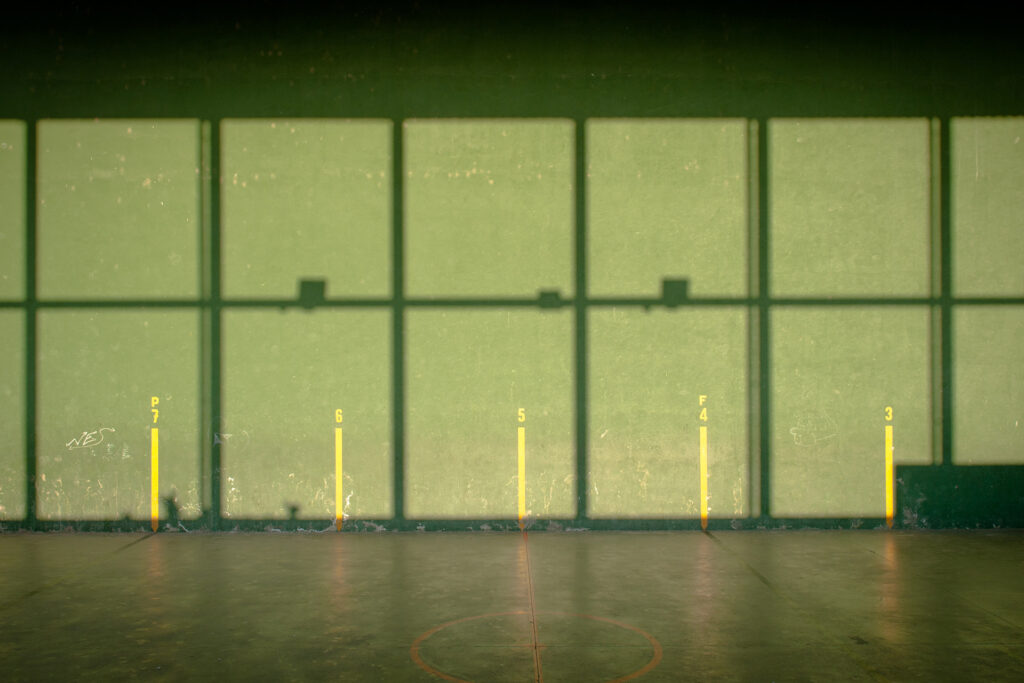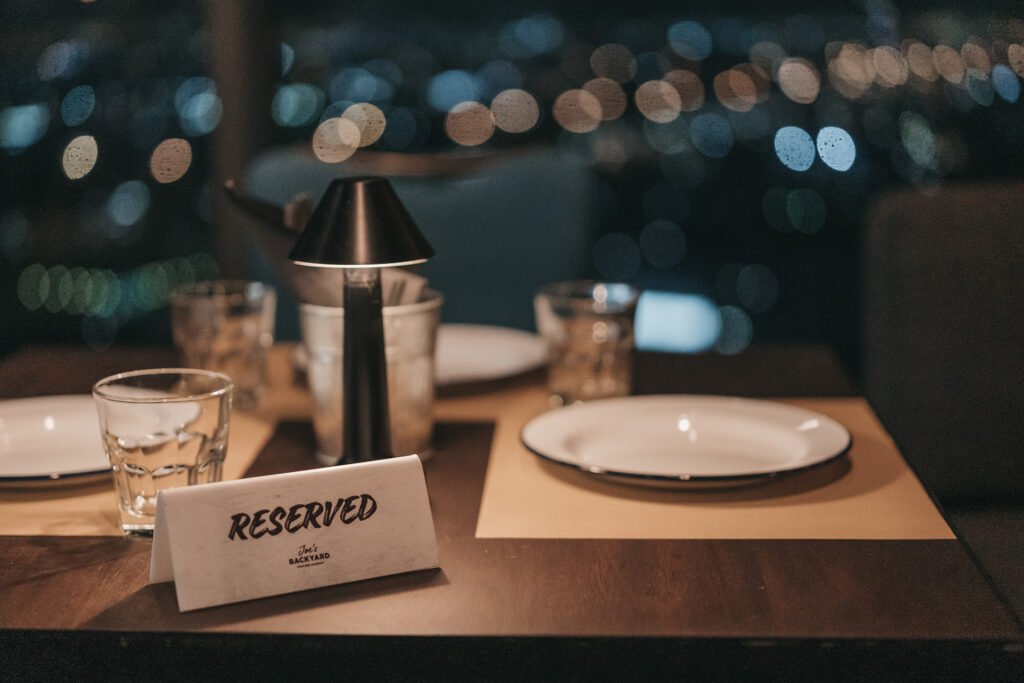In the final part of his epic rundown of post-pandemic trends (read parts one and two here!) Randy White, one of the world’s foremost authorities on the creation of leisure, entertainment and experience venues, maps out the future of OOH E&A.
There’s no doubt that the novel coronavirus has upended just about every facet of life as we knew it, including causing a total disruption to out-of-home entertainment and arts (OOH E&A). It has been an accelerant to many trends that were already underway, as well as creating some new ones. Here’s my rundown of the 21 most significant trends and changes that will shape the post-pandemic OOH E&A landscape, from 7-1.
Read trends 21-15 here and trends 14-8 here.
7. Increase in transformative experiences

We are moving from a materialist society to an experiential one. And this only accelerated during the pandemic.
In their book The Experience Economy, Joseph Pine and James Gilmore tell us that we are moving into the Transformation Economy, in which we desire experiences that are not only enjoyable and create great memories, but that transform and leave us improved in some way. There are many types of transformational experiences. Working out at a gym to be in better physical condition is one example. Another major area is learning new things of personal interest. The popularity of beer, wine, and food festivals in the past has been partially driven by people’s desire to discover and learn about food and drink.
Many people today want to improve themselves in their leisure time. Pure mindless relaxation and entertainment are no longer adequate. This learning-based leisure trend is evident with the attendance increases at cultural institutions, children’s museums, aquariums, botanical gardens, and zoos; the growth of for-profit edutainment venues; and the growth of eco-tourism and similar self-enrichment type vacations.
A Pew Research Center survey found that 73% of adults consider themselves lifelong learners. 74% of adults participated in at least one activity in the prior 12 months to advance their knowledge about something that personally interests them. These activities included reading, taking courses, or attending meetings or events tied to learning more about their personal interests. The survey found that adults with more formal education and higher incomes are more likely to engage in lifelong learning. It found that 87% of adults with at least a bachelor’s degree participated in personal learning activities in the past year compared with 60% of those with high school degrees. More than 8 in 10 adults living in households earning more than $75,000 (83%) are personal learners, compared with 65% of those living in households earning under $30,000.
Lifelong learning is really about pursuing Maslow’s fifth level of Hierarchy of Needs – self-actualization. Many people had a renewed interest in learning something new in the face of the pandemic’s disruption to our regular lives. Online learning sites like Skillshare, Duolingo, and Coursera saw extraordinary growth. Enrolments in online art and music classes spiked, while novice bakers flooded Vermont-based flour company King Arthur Baking’s helplines.
As the Pew study found, lifelong learners – people seeking transformational experiences – are more likely to be more educated and better off financially. They are also more likely to be younger, probably because a greater percentage of younger adults have higher education levels than older adults. Since 2000, the percentage of adults age 25+ with a bachelor’s or higher degree has grown from one quarter (25%) to one third (33%) in 2019. It is projected to increase, further driving growth in lifelong learners and people seeking transformative experiences.
What this means for OOH E&A: An important element that will drive a redistribution of demand is the desire for transformational experiences. Zoos, aquariums, museums, and other cultural venues should see increased demand. During the pandemic, many cultural institutions developed new, very elaborate virtual options, introducing people to their institutions, which is likely to contribute to people now wanting to visit them physically. For-profit edutainment venues will also appeal to the desire for lifelong learning opportunities.
6. Parents’ new definition of family time

Some behavioral shifts that will remain with us well into the post-pandemic world will mostly be driven by emotional changes in our priorities and become part of our emotional DNA. One of those emotional behavioral shifts is an acceleration of a trend that began several years ago – parents increasingly putting themselves first, instead of putting their kids first as their Gen X parents did.
“Family time” has taken on a new meaning. Millennial parents want to pursue their passions while they spend free time with their kids. When doing things with their children, it’s no longer about kid-specific activities. They want to have new, exciting experiences that fulfil them personally, while bringing their kids along for the ride. Four in ten dads even said they have no problem bringing their kids to bars.
Research by the Family Room consultancy has identified a pandemic-driven emotional shift they say will outlast the pandemic – a change from “We Love” to “Me Love” – parents now prioritizing themselves over their kids. Parents now feel they can’t be good to their kids unless they’re good to themselves. One “me love” shift places a higher priority on devoting time to making and keeping good friends over their children’s happiness. This “we” to “me” love shift even shows up in dining out. Family fun is no longer the number one emotional reward parents seek from dining out with their family. There is now less importance on having fun together as a family and much more significance on parents choosing foods they feel good about eating.
What this means for OOH E&A: The “We to Me” trend has profound implications for the future of not only children’s entertainment centers (CECs) that are focused exclusively on children, but also on family entertainment centers (FECs) that are focused on both children as well as the family as a whole. Now there needs to be a primary focus on the adults rather than the children, which isn’t the operating model for CECs.
5. The great extinction event

Pre-pandemic, we saw the over-expansion of OOH E&A in many markets. Supply was exceeding demand. The demand for OOH leisure is not elastic. It does not expand with additional options. Sadly, government-imposed closures and restrictions on capacity plus the public’s fear of catching the coronavirus in public places have resulted in many OOH E&A venues’ permanent closure. With the continued closures during the peak winter indoor season, many more are sure to close permanently.
What this means for OOH E&A: The great extinction event will make supply and demand be much more in balance post-pandemic. Even then, if the demand for OOH E&A is less than pre-pandemic due to all the new behaviors and habits people have, there could still be an oversupply in some markets.
4. Retail uber-apocalypse

There was already a retail brick-and-mortar apocalypse underway, with the growth of e-commerce taking sales from in-store shopping. Covid dramatically accelerated that trend. There were 11,000 permanent store closures in 2020, an all-time high. Mall and shopping center landlords are hungry to attract entertainment and restaurant tenants to fill empty stores and drive customer traffic to their centers. There will be many highly attractive rent and tenant improvement allowance offers available. E-commerce has produced another positive for consumers – along with its convenience, less time visiting brick-and-mortar stores frees up more time for leisure.
What this means for OOH E&A: The availability of vacant retail stores at attractive locations on financially attractive rental terms could spur entrepreneurs to open new entertainment centers on the mistaken belief the “old normal” will return or in anticipation of a roaring 2020s. Some might be successful if they are new business models for the “new normal”. However, too many new centers could again result in an oversaturation in many markets. Although the number of OOH E&A venues that survive will be fewer, the demand for them could be less due to the increased time spent with at-home and nature-based experiences. With less OOH E&A visits and spending to go around post-pandemic, those venues that survive will need a winning formula, a compelling reason to visit.
3. Booking essential

When OOH E&A was allowed to reopen after government-mandated closures, most venues switched to a reservation-only model to control capacities restricted by government regulations. For many venues, this new operating model proved successful, as it distributed demand over a wider time frame, reduced crowding, and often resulted in higher per capita revenues.
2. Redistribution of demand

When people ventured out of their homes after lockdowns to visit OOH leisure destinations, the perceived risk of catching the virus resulted in a changed competitive landscape with a redistribution of attendance among all the various OOH options compared to pre-crisis times. Outdoor venues benefitted, while indoor ones were considered riskier to attend.
1. The dawn of The Roaring 2020s

In his recently released book Apollo’s Arrow, about the impact of the coronavirus on the way we live (I highly recommend his book), Dr. Nicholas Christakis, a professor at Yale University, draws on long-forgotten pandemics to remind us that societies usually go on a spending spree when the austerity of a pandemic panic lifts.
Somehow, despite a global flu pandemic that killed 675,000 Americans in 1918 and 1919, and a depression that gutted the economy in 1920 and 1921, the United States not only recovered but entered into a decade of unprecedented growth and prosperity. Americans began a spending spree: the Roaring Twenties was on. The 1918 virus that killed more people than the deadliest war humanity had hitherto experienced did not reduce humanity’s determination to socialize. After years of isolation, of being afraid to hug and kiss their loved ones, of being separated by war, people went absolutely apeshit. F. Scott Fitzgerald, the patron saint of the Roaring Twenties, said it best: “A whole race going hedonistic, deciding on pleasure”.
Nicholas says that “If history is a guide, we should eventually make it to our own Roaring 20s when consumption and out-of-home socialization will come back with a vengeance”. He doesn’t think we’ll reach herd immunity until early 2022, which is why he puts economic recovery even farther down the line in 2024. After that, he predicts a sort of free-for-all reminiscent of the Roaring 20s when “people will relentlessly seek out social opportunities in nightclubs and bars and political rallies and sporting events and musical concerts and so on”.
Fareed Zakaria, in his book Ten Lessons for a Post-Pandemic World (also highly recommended), says that after the Spanish Flu pandemic that killed over 50 million people worldwide and 700,000 Americans, the U.S. settled into the Roaring Twenties and the Jazz Age. There is little evidence that people worked differently or socialized less after that gruesome outbreak. There was no new normal. It was a “return to normalcy”.
“But history doesn’t always repeat itself,” Fareed says. “Sometimes one is stuck as much by the discontinuities as the continuities. And that might be the case when comparing the Spanish Flu to the novel coronavirus. In the 1920s, people went back to their farms, factories, and offices because there was no alternative. To work, you had to be at work. If you sought entertainment, you would find it only in the theaters and music halls. If you wanted to buy food or clothing, you need to go to a brick-and-mortar store. That is no longer true … Today, life can be lived digitally.” So Fareed is suggesting that post-pandemic, digital options may replace many IRL ones.

Many of our new and increasing non-OOH E&A behaviors and habits are likely to stick and continue even post-pandemic, permanently replacing some of the prior OOH ones. Yes, most people will return to visiting OOH E&A, but probably less frequently, as leisure time is a zero-sum game. You only have so much of it. More of it will continue to be enjoyed as it was during the pandemic.
Instead of asking, “Is there a reason to do this online or at home?” people will now be asking, “Is there a good reason to do this away from home?” The new at-home and virtual opportunities and habits will be formidable competition to the forms of OOH E&A that existed pre-corona. The at-home options are far more convenient and less costly. The virtual experiences, hobbies, and nature-based activities have raised the bar for what is required to get people to leave their homes again to visit OOH E&A. Many OOH experiences that were attractive in the past will be less relevant and compelling than the at-home ones we have gotten comfortable with and are regularly enjoying.
Only time will tell how these trends and other affects from the coronavirus will reshape the future of out-of-home entertainment and arts. There is one certain thing; the future isn’t what it used to be.
Read trends 21-15 here and trends 14-8 here.
About the Author
Randy White is CEO of the 32-year-old White Hutchinson Leisure & Learning Group. Randy is considered one of the world’s foremost authorities on feasibility, concept development, design and production of leisure, entertainment and experience venues. He’s worked for over 600 clients in 37 countries. Over 100 of his articles have been published in leading leisure/entertainment industry magazines, and he’s been a featured keynote and speaker at over 40 different industry conventions. Randy is also the editor of his company’s Leisure eNewsletter and he blogs, tweets and posts regularly on LinkedIn.
This post originally appeared on Randy’s Leisure eNewsletter.
To get more insights from experts in the experience economy and members of our Founding Circle like Vince – and to be the first to know about our membership programme, events and more – sign up to the WXO community here.
//ENDS//






